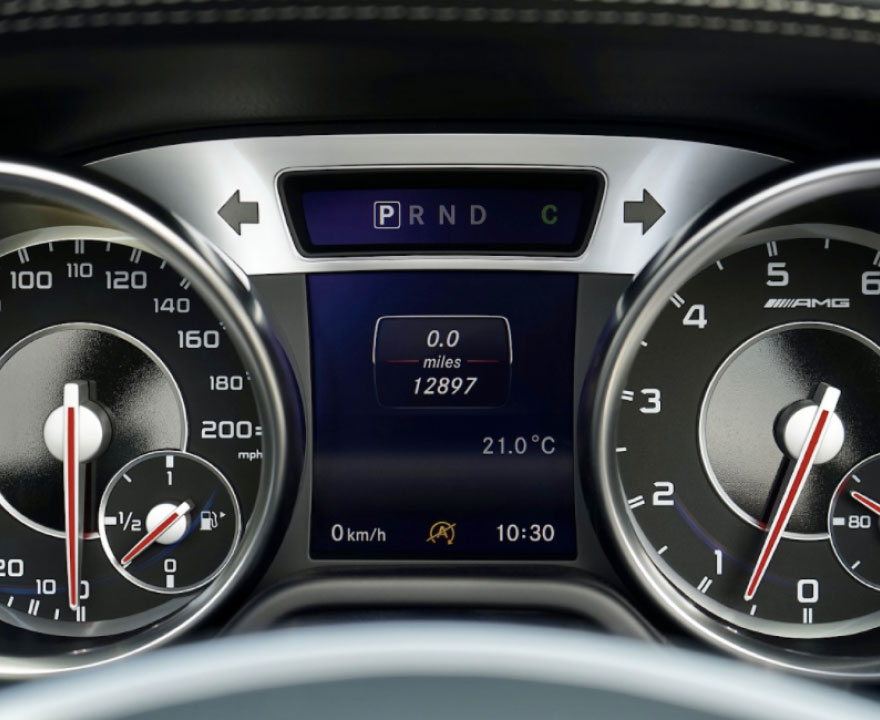Elements Included in Controls, Instrument Panels (IP), and Displays Analysis
- Controls are defined as the hand-operated or touch-operated parts of a device that enable the driver to change the functioning of the vehicle.
- Instrument panels (IP) and displays are defined as gauges, infotainment, overhead systems, telltales, indicators, and navigation..
Current Analysis Methods
Controls, instrument panels (IP), and displays analysis are currently manually designed in a CAD system. These geometric design methodologies are labor-intensive, high-cost, and yield little accuracy.
Ocular3D Analysis Advantage
To ensure the accessibility, visibility, and recognition of vehicle controls, instrument panels (IP), and displays Visualization Analysis™ that enhance driver safety, Ocular3D mathematically pinpoints potential safety hazards associated with:
- Degradation of driver performance
- Potential driver distractions
- Driver operational tasks
- Eyes-off-the-road time
Necessary Guidelines Ocular3D Meets
Controls and displays capabilities example:
Function 1
Determine driver's field of view of a typical instrument panel (IP) obscured by the steering wheel. You can perform multiple iterations of instrument panel analysis in Ocular3D with a single click.
Function 2
Determine driver's field of view of the airbag covers which have become larger due to new airbag systems. You can perform multiple iterations of airbag cover analysis in Ocular3D with a single click.
Function 3
Determine driver's field of view of steering wheel spokes, which are larger due to the addition of electronic controls. You can perform multiple iterations of spoke analysis in Ocular3D with a single click.
For OEMs, the Benefits of Using Ocular3D for Controls, Instrument Panel (IP), and Displays Visualization AnalysisTM are Clear
- Ocular3D’s machine learning learns your clinical data sets and provides optimized design recommendations.
- Specific regulatory compliance certifications for fewer certification withdrawals.
- Proof of compliance regardless of design trends or configurations.
- Eliminate current manual, labor-intensive, high-cost CAD methods which only result in low accuracy analysis results.
- Enhance OEM best practices with fast and accurate design cycles, eliminating unnecessary production costs.
